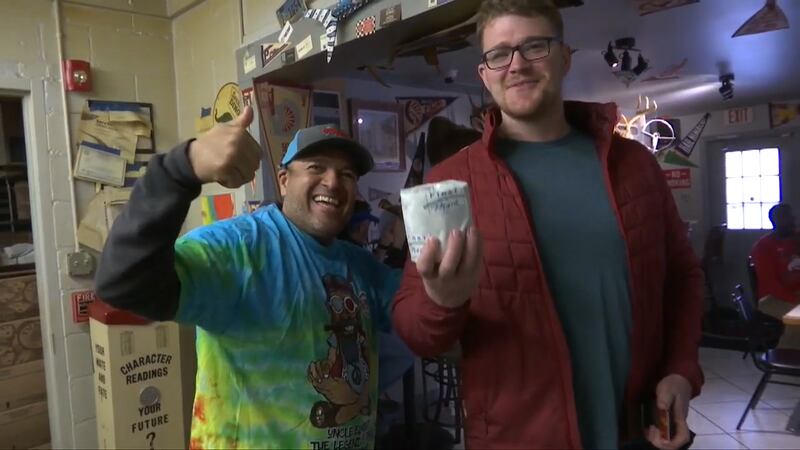ATLANTA — As more and more communities started to shelter in place over the coronavirus, a surge of people flocked to their local grocery stores and stripped the shelves of bread, meat, produce, cleaning products and, as we all well know by this point, toilet paper.
State, city and federal authorities all said the supply chain is perfectly fine and store shelves would fill back up if people shopped like they normally did.
And for the most part they were correct. Most stores have started getting their supplies of the essentials back on the shelves, but the one big thing that is still missing is toilet paper.
It may sound odd that there was run on toilet paper, considering the coronavirus is mainly a virus that affects your respiratory system, but nonetheless, finding toilet paper is kind of like finding Willy Wonka’s golden ticket these days.
So yes, there is a reason for it -- and it has nothing to do with panic buying.
Journalist Will Oremus, senior writer, OneZero, at Medium, started looking into why there is still such a shortage of your favorite brand of toilet paper. The quick answer is because everyone is being asked to stay home.
RELATED STORIES:
- Gov. Kemp, state leaders extend public health state of emergency
- Tyler Perry pays for seniors’ groceries at 44 metro area Kroger stores
- Staying safe in the time of coronavirus: Are our essential workers being put in danger?
The toilet paper industry is actually split into two different markets: home use toilet paper and business use toilet paper.
“With some 75% of the U.S. population under stay-at-home orders, Americans are no longer using the restrooms at their workplace, in schools, at restaurants, at hotels or in airports,” Oremus wrote.
Atlanta-based Georgia Pacific estimates that the average household will use 40% more toilet that usual with everyone in their household staying home.
“That’s a huge leap in demand for a product whose supply chain is predicated on the assumption that demand is essentially constant. It’s one that won’t fully subside even when people stop hoarding or panic-buying,” Oremus wrote.
Essentially, there isn’t enough home-use toilet paper being produced. And the home-use toilet paper is a different kind of toilet paper than what businesses buy for their restrooms.
“Not only is it not the same product, but it often doesn’t come from the same mills,” said Jim Luke, professor of economics at Lansing Community College. “So, for instance, Procter & Gamble [which owns Charmin] is huge in the retail consumer market. But it doesn’t play in the institutional market at all.”
Georgia-Pacific also told Oremus that the commercial use toilet paper they produce uses more recycled fiber while commercial brand toilet paper, like Charmin and Quilted Northern, are made with 100% virgin fiber.
So, will more toilet be produced in the days ahead?
“Because toilet paper is high volume but low value, the industry runs on extreme efficiency, with mills built to work at full capacity around the clock even in normal times. That works only because demand is typically so steady. If toilet paper manufacturers spend a bunch of money now to refocus on the retail channel, they’ll face the same problem in reverse once people head back to work again,” Oremus wrote.
There are also other goods that could face a similar situation as the toilet paper companies.
A fruit and vegetable supplier CEO told NPR’s "Weekend Edition" that schools and restaurants are canceling their banana orders, while they’re flying off the shelves at the super market.
“The problem is that the bananas he sells to schools and restaurants are ‘petite’ and sold loose in boxes of 150, whereas grocery store bananas are larger and sold in bunches. Beer companies face a similar challenge converting commercial keg sales to retail cans and bottles,” Oremus wrote.
In end, many of the industry leaders feel that they can adapt to the changes in the market over the coronavirus, but it will just take time.
Information used in this article from the website Marker.
© 2020 Cox Media Group







